 Notice:
Notice:SOLUTION
Recommend
Contact US
TEL+86 138 6264 8316
hotline+86 138 6264 8316
E-mailrohsxrf@126.com
addressNo. 1888, Zhonghuayuan West Road, Kunshan City, Jiangsu Province, 22/F, Taohuayuan Science and Technology Innovation Park, Furong East Road, Songgang, Bao'an District, Shenzhen, China
Environment HOME >> SOLUTION >> Environment
Foreword
With the increasing demand for industry, energy, and transportation, the problem of atmospheric pollution has become increasingly prominent. Among them, heavy metals that enter the atmosphere in different forms become one of the most important pollutants in the air. It is estimated that more than 9,000 tons of five kinds of lead, mercury, cadmium, chromium, and arsenic in the air will be emitted in the country in one year. Non-ferrous metal smelting, lead storage batteries, recycled lead, coal-fired power plants, cement, iron and steel smelting, Chemicals production and other industries are the major sources of heavy metal pollution. Among them, non-ferrous metal smelting enterprises and coal-fired power plants are the major sources of mercury emissions. In addition, tail gas, tire friction, and brake friction are also important sources of pollution. Atmospheric heavy metals are present in suspended particles, and the dynamic diameter of particles is from 0.1 μm to 100 μm. Usually suspended particles of 50 μm or more settle in the atmosphere in minutes or hours. However, suspended particles less than 10 μm, especially less than 2.5 μm, do not easily settle. They can float in the atmosphere for days or even years, and can migrate hundreds or even thousands of kilometers.
Heavy metal pollutants in the air damage buildings, form soils, and cross-contamination of surface water systems through wind, rain, and snow. Heavy metals that enter the water body undergo a series of physical and chemical reactions such as oxidation, dissolution, desorption, complexation, and bio-methylation that produce water-soluble metal salts that diffuse with the flow of water. When the physical and chemical conditions of the basin change, these metal salts may be reduced, precipitated, adsorbed, and precipitated in the soil. Respiratory organs of different diameter particles are: 10 ~ 100 μm, nasal cavity; 2.5 ~ 10 μm, nasopharyngeal area; 0.1 ~ 2.5 μm, bronchus and lungs; 0.1 μm or less, heavy metal elements have strong migration, Enrichment and concealment, through the air, water, food chain and other ways into the human body, significant biological toxicity, easy to cause chronic poisoning, with carcinogenic, teratogenic and mutagenic effects on the immune system has a certain impact, a serious threat to human health.
At present, the Ministry of Environmental Protection has officially issued the relevant standards for the determination of inorganic elements in ambient air particles - energy dispersive X-ray fluorescence spectrometry, which shows that energy dispersive X-ray fluorescence spectrometers can easily, quickly and accurately analyze atmospheric particulate matter in samples. The heavy metal content.
Energy Dispersion X Fluorescence Spectrometer Analysis Principle
When the primary X-rays generated by the X-ray tube are irradiated to the surface of a uniform and uniform particle, the atoms of the test element contained in the sample are excited to emit characteristic X-rays. After being received by the detector, the light signal is converted into an analog electrical signal. The analog-to-digital converter converts the analog electrical signal into a digital signal and sends it to a computer for processing. The X-ray intensity of the element feature is obtained by dedicated software, and the content of the element to be measured is calculated according to the corresponding mathematical model of the spectral peak intensity and content of the element feature.
EDX4500H Energy Dispersion X Fluorescence Spectrometer Introduction
EDX 4500H X Energy Dispersive Fluorescence Spectrometer utilizes XRF detection principle to achieve fast, accurate and non-destructive analysis of various elemental components. The main feature of this instrument is the use of intelligent vacuum system, which can have good excitation effect on light elements such as Si, P, S, Al, Mg, etc. The XRF technology can be used to accurately analyze the heavy elements of atmospheric particulate matter enrichment in atmospheric filtration. The analysis of membrane enrichment content has the characteristics of non-destructiveness, rapidness, accuracy, etc., effectively improving the detection time and work efficiency.
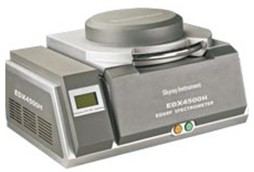
Figure 1 EDX4500H Energy Dispersive X-ray Fluorescence Spectrometer
Performance characteristics
High-efficiency, ultra-thin window X-ray tube, the indicators have reached the international advanced level
Using digital multi-channel technology, it can achieve ultra-high count rate, improve test efficiency and accuracy
SDD silicon drift detector, good energy linearity, energy resolution, peak-to-back ratio and energy spectrum characteristics
Low-energy X-rays excite the test element and have good excitation effect on light elements such as Si and P
Intelligent vacuum pumping system shields the influence of air and greatly expands the scope of testing
Automatic spectrum stabilization device ensures the consistency of instrument work
High signal-to-noise ratio electronic circuit unit
Automatically switch collimators and filters for different samples, eliminating the need for manual operations
Decompose spectrum to decompose spectral peaks so that the measured results of the measured elements have equal analytical accuracy
Multi-parameter linear regression method to significantly suppress absorption and enhancement effects between elements
The LCD screen shows the important parameters of the instrument (tube pressure, tube flow, vacuum degree) at a glance
Technical Parameters
Product Model:EDX 4500H
Product Name: Energy Dispersive X Fluorescence Spectrometer
Measurement element range: from sodium (Na) to uranium (U)
Element content analysis range: ppm-99.99% (different elements, different analysis range)
Simultaneous analysis of elements: one-time measurement of dozens of elements
Measurement time: 30 seconds - 200 seconds
Detector energy resolution: 145±5 eV
Tube pressure: 5KV-50KV
Tube flow: 50μA-1000μA
Measurement object status: powder, solid, liquid
Input voltage: AC 110V/220V
Ambient temperature: 15°C-30°C
Humidity: 35%-70%
Sample chamber volume: 320mm×100mm
Dimensions: 660mm×510mm×350mm
Weight: 65Kg
Standard configuration
High-efficiency thin window X-ray tube
SDD silicon drift detector
Digital multi-channel technology
Optical path enhancement system
High signal to noise ratio electronic circuit unit
Built-in high-definition camera
Automatic Switching Collimators and Filters
Automatic spectrum stabilization device
Triple security protection model
Reliable overall steel structure
90mm × 70mm status display LCD screen
Vacuum pump
Atmospheric particulate collection and preparation
Ambient air particulate sampling point settings should meet the relevant requirements of HJ664. The sampling process should be performed according to the particle sampling requirements in HJ/T194. When the target element content is low or PM10 (PM2.5) samples are collected, the sampling volume can be increased appropriately. Unorganized emission particulate sample collection Set monitoring points according to the relevant requirements in HJ/T55. Others are consistent with the collection requirements for ambient air samples. The collection of two types of particulate samples should meet the requirements of the relevant standards issued by the Ministry of Environmental Protection.
The heavy metal detection process in atmospheric particles is shown in Figure 2. First, the air and the carried particulate matter are pumped into the cutter by a flow control pump. The particulate collection mainly depends on the cutting head of the sampler, and the PM10 sampler cut point is 10 μm. The capture efficiency of 10 μm particles is more than 50%, and then the particles are captured by a certain size of sampling filter. Commonly used sampling membranes are quartz filter, PTFE filter, polycarbonate filter (PC ) Etc. After a period of time, the sample was collected and collected. After the sampling was completed, the filter was removed with a tweezers and stored in a dry, clean, numbered sample box.
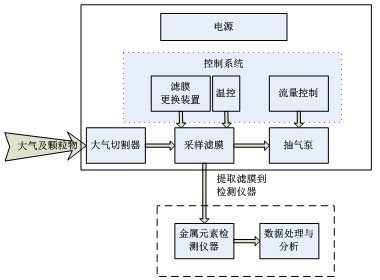
Figure 2 Atmospheric heavy metal collection and detection process
In this experiment, a quartz filter membrane was used. The diameter of the filter membrane (0.4-0.8 μm) was 47 mm, the particle cutter (PM10), and the gas flow rate was controlled at 1 m3/h, and the sample was sampled for 24 hours. The numbers are 1#, 2#, ... 7#. The collected samples were stored dry for testing.
Formulation and Analysis of Heavy Metal Curves of Atmospheric Particulates
Set the appropriate measurement conditions, use EDX4500H energy dispersive X-ray fluorescence spectrometer to scan the standard filter material, establish the calibration working curve of the content and intensity of the test element, and then measure the unknown sample of the atmospheric particulate filter.
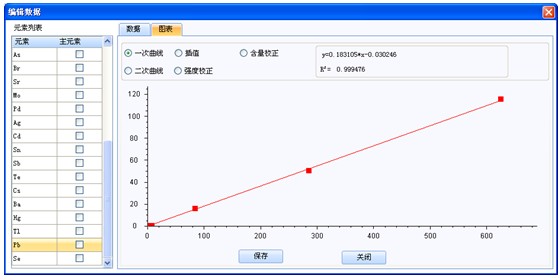
Fig. 3 Pb element working curve of atmospheric particles in EDX4500H
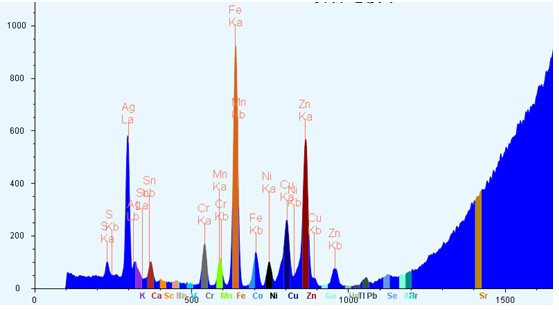
Fig. 4 Fluorescence analysis of an enriched filter X by an atmospheric particle of EDX4500H
Table 1 Analytical results of atmospheric heavy metal membrane EDX4500H in a certain area Unit: μg/m3
滤膜 | 1# | 2# | 3# | 4# | 5# | 6# | 7# |
Ti | 0.000 | 0.000 | 0.000 | 0.018 | 0.000 | 0.000 | 0.000 |
V | 0.000 | 0.000 | 0.000 | 0.000 | 0.000 | 0.000 | 0.000 |
Cr | 0.002 | 0.001 | 0.000 | 0.007 | 0.003 | 0.002 | 0.001 |
Mn | 0.000 | 0.000 | 0.000 | 0.023 | 0.022 | 0.026 | 0.000 |
Fe | 0.237 | 0.131 | 0.156 | 1.062 | 0.264 | 0.541 | 0.153 |
Co | 0.000 | 0.000 | 0.000 | 0.000 | 0.000 | 0.000 | 0.000 |
Cu | 0.001 | 0.001 | 0.001 | 0.162 | 0.007 | 0.008 | 0.001 |
Zn | 0.021 | 0.011 | 0.015 | 0.346 | 0.119 | 0.140 | 0.014 |
As | 0.000 | 0.000 | 0.000 | 0.063 | 0.000 | 0.000 | 0.000 |
Se | 0.000 | 0.000 | 0.000 | 0.000 | 0.000 | 0.000 | 0.000 |
Cd | 0.000 | 0.000 | 0.000 | 0.063 | 0.000 | 0.000 | 0.000 |
Ba | 0.000 | 0.000 | 0.000 | 0.027 | 0.001 | 0.027 | 0.000 |
Pb | 0.006 | 0.004 | 0.009 | 2.955 | 0.076 | 0.095 | 0.011 |
At present, the “Ambient Air Quality Standard” GB3095-2012 stipulates that the annual average concentration limit of Pb element is 0.5 μg/m3. Because Pb belongs to the more toxic metal, its concentration limit is lower among various heavy metals. The instrument detected that the content of Pb in the sample #4 exceeded the standard, up to 2.955 μg/m3, and the Fe element content was also high, reaching 1.062 μg/m3. In addition, Fe and Zn, the most common heavy metal contaminants in the atmosphere, were detected in each sample.
The results show that the particulates in the atmosphere can be collected by the quartz filter and the standard calibration curve can be used to directly analyze the content of atmospheric heavy metals in the unknown sample. This method does not require digestion, and the measurement time of each sample only takes a few minutes. The instrument satisfies the requirements of the relevant standards for the "Determination of inorganic elements in ambient air particles - energy dispersive X-ray fluorescence spectrometry" implemented by the Ministry of Environmental Protection on July 1, 2017.
Accessories: Installation and Operating Environment of the Instrument
First, the overall design of the laboratory:
According to the characteristics of sample testing and sample preparation, each sub-compartment shall be established. Sample testing rooms and sample preparation rooms shall be established. Scientific equipment shall be arranged and placed, power lines shall be arranged, and reasonable lighting, natural ventilation and lighting shall be provided.
Schematic diagram: The sample testing room is as follows. For specific requirements, see the instrument installation conditions below.
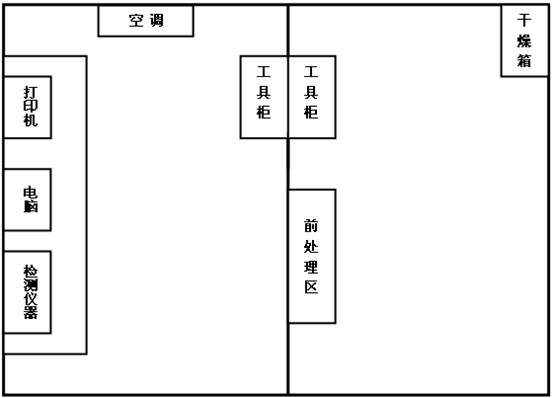
Second, the working environment requirements
2.1 Ambient temperature: 10°C-35°C
2.2 Relative humidity: less than 70%
2.3 Power supply: AC 220V (If the power grid fluctuates ≥ 10%, a special AC voltage regulator (1kw or more) is required.
2.4 Room: No corrosive gas, no mechanical vibration, no electromagnetic field interference.



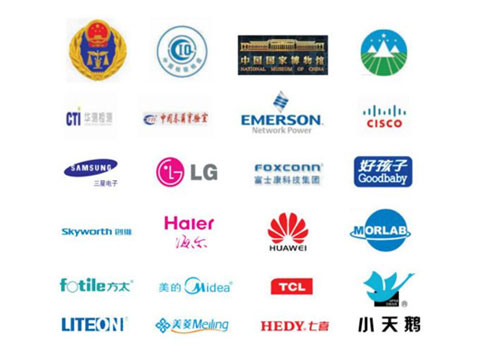

Skyray Analytical Testing Instrument Research Institute has three centers, namely "analysis instrument research and development center", "physiochemical analysis and testing center" and "analysis and testing technology application development center."Tianrui Analytical Instruments Co., Ltd. recently formed a staff of 1 academician, 11 Ph.D., 13 senior engineers, 17 masters, and 50 undergraduate R&D personnel from famous universities.

Mr. Liu Zhaogui: graduate student in nuclear physics from Tsinghua University. It has been appraised as the outstanding entrepreneur of Jiangsu Province, the young and middle-aged experts who have outstanding contribution in Jiangsu Province, the first science and Technology Minister of Kunshan, and the national science and technology ministry "scientific and technological innovation and entrepreneurial talent". With the approval of the State Council, the special allowance of the State Council is enjoyed.

Dr. Yao graduated from the Department of Engineering Physics of Tsinghua University with a Ph.D. in nuclear electronics. He has been engaged in the development of analytical instruments for 26 years. He is mainly engaged in the research of X-ray fluorescence analysis technology and application technology, and he participated in the "Thirteenth Five-Year Plan" national key instrument technology research and development. Patent of "Spectrometer Grating 2D" patent, "X-ray fluorescence double crystal fixed element track spectrometer" patent and "X-ray fluorescence spectrum analyzer pyrolytic graphite crystal beam splitter" patent, and participated in the drafting of a number of national standards industry The standard is an authoritative expert in the X-ray fluorescence spectrometer industry in China.

The FP (Basic Parameters) algorithm is an effective method for X-ray fluorescence spectrometry analysis. It can perform qualitative and quantitative analysis of the elemental components of the sample with little or no standard sample, and can also analyze the thickness of the coating or coating.It is well known that the biggest problem with X-ray fluorescence analysis is that elemental fluorescence intensity is affected by coexisting elements (matrix absorption and enhancement effects) and is not usually linear with content. The basic parameter method has already taken into account the matrix effect in the calculation of the spectrum, and the linear relationship between the calculated content and the known content can be obtained. Using a few known sample calibration algorithms to eliminate systematic errors can achieve accurate quantitative results.

The polarization secondary target excitation technology can remove the scattering background to the maximum extent, improve the signal to noise ratio, and reduce the detection limit of the detector. Assuming that the x-ray generated by the anode of the x-ray tube is non-polarized and is incident on the target (scattering body) in the z-axis direction, the scattered beam propagating along the y-axis is linearly polarized light. The electric field vector vibrates in the v plane and the vibration direction is parallel to the X axis. The sample placed on the y-axis is excited by polarized light, producing unpolarized fluorescent x-rays. Since the sample and the sample support do not generate scattered radiation in the X-axis direction, placing the detector on the x-axis can fully utilize the polarization effect and reduce the background caused by the elastic and inelastic scattering of x-rays.

From the X-ray generator to the sample, the X-ray fluorescence emitted by the sample to the detector is called the light path. The shorter the distance traveled by the optical path is, the less interference will be caused. Skyray Instrument designed an ultra-short optical path technology to ensure the accuracy of light element detection results, and is particularly suitable for RoHS-compliant halogen-free instruction detection.

The micro-level positioning, micro-scanning analysis, the point-to-point centering of the spatial micro-sized spot and the determination of the spatial micro-focus spot position have been truly achieved. A translation and rotation switching position device realizes position rotation switching in a small space, avoids the large space required for the linear motion and the common rotation movement, because the problem of lengthening of the optical path caused by the inability to fit is eliminated.

XRF test and analysis instruments are generally used for the comparison test of standard samples, which are subject to the quality of the standard samples during the test. Tianrui Instrument's original non-standard technology can carry out all-element analysis without standard samples, leading the development trend and trend of the industry.

XRF test and analysis instruments are generally used for the comparison test of standard samples, which are subject to the quality of the standard samples during the test. Tianrui Instrument's original non-standard technology can carry out all-element analysis without standard samples, leading the development trend and trend of the industry.

Skyray's unique SNR enhancement technology can effectively remove noise signal interference and minimize element detection limits.
As shown in Figure SUPER XRF 1050, the determination of Pb in food can be as low as 0.59 ppm.

patented intelligent analysis software enables precise analysis of 80 elements, non-standard quantitative analysis, micro-analysis, thin film analysis, and advanced sub-spectral analysis.






hotline:800-9993-818
TEL:86 136 1622 3382
Address: 1888 Zhonghuayuan West Road, Kunshan City, Jiangsu Province/
深圳宝安区松岗芙蓉东路桃花源科技创新园22层

Previous:GC-MS6800 Test Solution for...
Iron and steel...
2018-04-25
Atmospheric Heavy...
2018-04-25
Tianrui Instrument ICP...
2018-04-25
Tianrui Instruments...
2018-04-25
Tianrui Instrument ICP...
2018-04-25
Non-ferrous metal...
2018-04-25
Tian Rui Instrument GC...
2018-04-25
Skyray Instruments...
2018-04-25
Environmental...
2018-04-25
Tianrui Instrument...
2018-04-25


